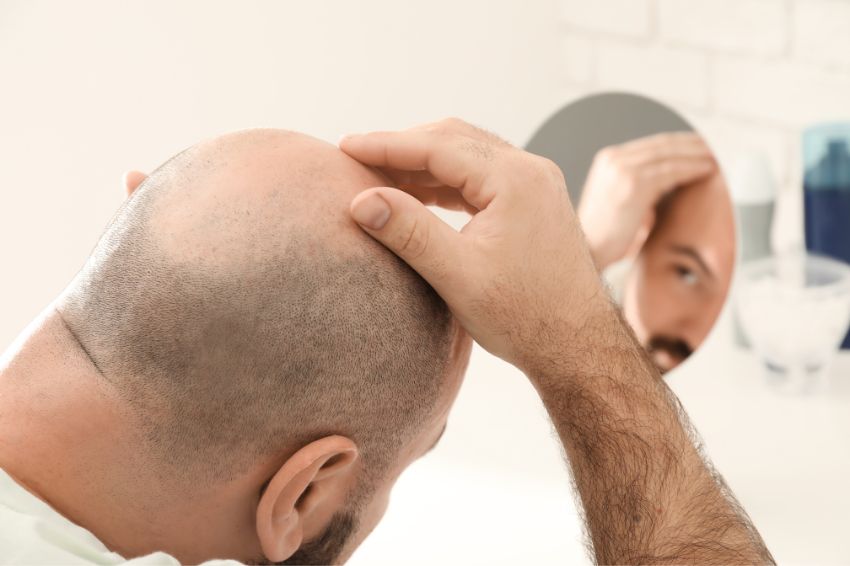



Hair transplant procedures are excellent for those seeking permanent hair restoration post-balding or thinning. While these procedures have impressive success rates.
Hair transplants also sometimes fail for various reasons, such as the patient's unique physiological characteristics, improper pre and post-operative care, inexperienced surgeons, etc.
Understanding the potential for failures and the associated factors is crucial for patients considering this procedure.
Discuss the common reasons behind hair transplant failures and explore possible preventive measures.
Selecting suitable candidates is crucial to ensure a successful outcome on hair transplant procedures. However, sometimes, due to a lack of thorough evaluation and assessment of a patient’s hair loss pattern, overall health condition, age, and donor hair sufficiency, wrong candidates can be chosen for the procedure, resulting in hair transplant failures.
To be the right candidate for hair transplant, one must be younger than 65 (age may also vary according to patients and their degree of hair loss), have a healthy and suitable donor area, and not suffer from blood-borne illnesses or hemophilia.
Besides, hair transplants in early stages are not recommended for female or male pattern baldness, as they may have some bald patches after a certain age, say 22. So, it is good to wait until the age to see how your hair loss happens after this age.
The hair transplantation procedure requires excellent attention to detail, emphasizing the importance of choosing a proficient surgeon with years of experience in the field.
If an inexperienced surgeon is chosen, there is a high likelihood of experiencing complications that can significantly impact the entire hair transplant process.
One such mistake an inexperienced hair transplant surgeon may make is selecting an inappropriate donor area for graft extraction. Extracting grafts from a balding-prone area may not produce the expected results, and the transplanted grafts may sometimes fall out right after the procedure.
Only some people are suitable candidates for hair transplants. You can expect more harm than good if you are not an ideal candidate.
For example, if a hair transplant is performed even after knowing you have insufficient or poor-quality donor grafts, all you will experience post-procedure is decreased hair visibility and hair shedding.
So, every patient needs to undergo a thorough medical history review and the diagnosis of chronic illnesses to ensure their eligibility for the procedure.
Utilizing donor grafts from different parts of the recipient's body or employing hair from other individuals does not guarantee desirable outcomes as using donor hair from the patient's head. It not only carries a higher risk of failure but often results in an unnatural appearance of the hair.
Other reasons for graft survival issues include graft rejection caused by Lichen Planopilaris (a type of scarring alopecia), ischemia-reperfusion injury induced by decreased blood supply during the procedure, and physical damage to the grafts resulting from blunt trauma, dehydration, and transection.
The success of your hair transplant procedure depends on your hair's current state/condition. You must acknowledge the limitations of your condition and set realistic expectations to avoid disappointment.
Communicating your goals and expectations with your surgeon ensures a satisfactory outcome. Your surgeon will provide valuable insights into what can be achieved through a hair transplant. For instance, if you have a limited number of donor grafts, expecting a high hair density may not be realistic.
Following a hair transplant procedure, adhering to the post-operative instructions is essential. Though it is entirely normal to experience scabbing around the newly transplanted hair grafts after the procedure, excessive scabbing can negatively impact graft survival and may hinder the overall outcome.
Therefore, maintaining proper hygiene is essential to prevent any potential infections.
Besides, be sure to adjust your sleeping position to prevent friction on the transplanted areas, which can reduce the risk of swelling and hair fall post-procedure.
Likewise, don’t put pressure or cause traction for the first few weeks to protect your hair follicles. You should also avoid alcohol consumption, strenuous activities, sun exposure, and extremely cold or hot showers to ensure better outcomes.
You should also read: Post Hair Transplant Care - The Do's and Don'ts for Best Results
For maximum success and utmost satisfaction from the procedure, take the time to research and carefully select your surgeon and clinic thoroughly.
Choose the highest quality option that falls within your financial means. Eventually, you get what you pay for, so don’t get tempted by the cheap quotes.
Setting practical goals and maintaining open lines of communication with your hair transplant surgeon can help you clearly understand what you will achieve.
Take extra attention to the newly transplanted grafts during the initial days to improve the overall success of the procedure.
Choose a clinic offering hair transplant procedures with maximum success rates and a comprehensive follow-up service to guarantee successful outcomes and prompt intervention if any complications arise.
As hair transplant procedures can sometimes fail, making an informed decision to ensure the desired results is indispensable.
Seeking expert consultations is highly recommended, as they can provide invaluable guidance, personalized advice, and realistic expectations, leading you to make the right decision.
Are you struggling with hair loss and seeking a solution to regain that full head of hair you once had?
Look no further than Medical Hair Transplant & Aesthetics. With our advanced experience in the field, we are your go-to destination for all hair transplant-related solutions. Contact us today for your consultation.